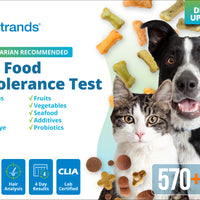Problems digesting milk and dairy products? Curious to see which ethnic and racial groups have a higher risk of developing lactose intolerance? I’m with you on this one. Statistics from the National Digestive Diseases Information Clearinghouse show that between 30 and 50 million Americans are lactose intolerant. This includes 90% Asian Americans, 80% American Indians, 75% African Americans, and about 50% Hispanics/Latinos. When you compare these numbers with those of European descent, where only 20% experience lactose intolerance, you begin to see a significant genetic divide.
While reading the literature, I discovered that lactose intolerance is not rare, but more common than I expected. According to the National Center for Biotechnology Information, approximately 65% of the world’s population is lactose intolerant. In the U.S., the percentage is about 36%.
Managing lactose intolerance symptoms for long-term health begins with an understanding of the underlying mechanisms of this condition. Join me as we delve into the science of lactose intolerance, how it develops, and offer some options to help you thrive with lactose intolerance without sacrificing the foods you enjoy.
What is lactose intolerance?
For many years, I thought lactose intolerance was just a minor inconvenience that people have to deal with. To my surprise, however, I learned that Lactose intolerance is a clinical syndrome with genetic components typically detected at around age two or older. It occurs when a person is unable to digest and metabolize lactose (the main sugar in milk) because their body does not have or produce enough of the intestinal enzyme lactase. As a result, lactose can’t be broken down into simpler forms of sugar to be absorbed into the bloodstream, causing some of the typical symptoms a person experiences after consuming food products containing lactose.
There are four types of lactase enzyme deficiency causing this digestive condition.
-
Primary Lactase Deficiency:
Known as lactase non-persistence, and the most common. A person with this type has a gradual decline of lactase enzyme activity as they age, beginning in infancy, until their symptoms begin to manifest during adolescence or early adulthood.
-
Secondary Lactase Deficiency:
This type is caused by different infectious, inflammatory, or other diseases, including: Gastroenteritis, celiac disease, Crohn's disease, ulcerative colitis, chemotherapy, and antibiotics.
-
Developmental Lactase Deficiency:
This one is seen in premature infants born at 28 to 37 weeks of gestation who are unable to digest lactose because their intestines are underdeveloped. This condition improves as the child gets older and their intestines develop, resulting in normal lactase activity.
-
Congenital Lactase Deficiency:
This is a rare type, with only 40 cases globally. It is caused by a decrease or absence of lactase enzyme activity since birth, as a result of autosomal recessive inheritance.
What are some of the symptoms someone with lactose intolerance may manifest?
Lactose intolerance symptoms vary, but commonly develop within a few hours of consuming lactose-containing food. These may include:
- Abdominal bloating
- Abdominal pain
- Cramps
- Water, bulky, odd-smelling stools
- Nausea and vomiting
- Flatulence (beginning 30 minutes to 2 hours after consuming lactose)
- Fullness
- Occasional constipation
The severity of your symptoms and how soon they appear will depend on how much of the lactase enzyme your body can produce, the size and fat content of the food, and the amount of lactose you have ingested. It is also important to know that these symptoms are not solely caused by a lack of the lactase enzyme, but may also be attributed to another condition called bacterial overgrowth. This is when the small bowel has excessive bacteria that contribute to lactose sensitivity, releasing gas in the process and causing cramping, bloating, flatulence, and diarrhea.
What are the main compounds in milk and dairy products?

Milk has been a primary source of rich nutrients since medieval times. With some rare exceptions, we are the only species that consume the milk of another animal for nourishment. The way we produce, process, and consume milk has undergone significant evolution, resulting in the introduction of a diverse range of dairy products that meet vital life-long human nutritional needs. More recently, extensive research has also found that milk and dairy products have a wide variety of “functional, biologically active compounds with potential impact on health and well-being.” The compositional, functional, and biological diversity of these products derives from the biological source and processing of milk. In light of this, let’s find out what some of the primary compounds in milk and other dairy products that the general population consumes are.
Milk and dairy products are primarily composed of water, milk fat, and other substances like proteins, lactose, minerals, and trace elements. Their specific composition varies depending on the type of milk (e.g., cow’s milk, goat’s milk, sheep’s milk) and processing methods.
Take a look at a more detailed explanation:
- Water: Functions as a solvent in which fat, proteins, and sugar are dissolved or suspended. It’s the major component by volume, making up around 87% of milk.
- Lactose (Carbohydrate): This is a primary sugar in milk that requires lactase enzyme to be digested.
- Fat: A mixture of triglycerides, phospholipids, and cholesterol.
- Proteins: Includes caseins (such as alpha-s1, beta, and kappa-casein) and whey proteins like alpha-lactalbumin and beta-lactoglobulin. These are increasingly significant for physiological and biochemical functions, vital for human metabolism and health.
- Minerals: Calcium, phosphorus, potassium, magnesium, and others.
- Vitamins: A, D, E, and B vitamins, among others.
- Trace Elements (essential and non-essential): Iron, copper, zinc, selenium, iodine, strontium, and others)
- Antioxidant peptides (bioactive compounds): These can neutralize free radicals, protecting against oxidation damage
- Enzymes: These are naturally occurring in milk and include lactoperoxidase and lysozyme, contributing to antimicrobial properties.
- Bioactive lipids: Conjugate linoleic acid (CLA) and omega-3 fatty acids. These have many health-promoting effects.
What are the complications of lactose intolerance?

Because our bodies need calcium, vitamin D, and many of the vital vitamins and nutrients found in milk and milk products, lacking these nutrients due to lactose intolerance can impact our health. Calcium, for instance, is a nutrient we need throughout our lives to grow and have healthy bones. If we don’t get enough calcium, our bones may weaken and are more likely to break, a condition called osteoporosis. Other complications that can develop because of lactose intolerance are:
- Osteopenia (loss of bone density)
- Weight loss
- Malnutrition
- Rickets (softening and weakening of bones in children)
- Growth failure
If you suffer from lactose intolerance, it is recommended that you change your diet to get more calcium while you manage your symptoms.
How can you treat and manage lactose intolerance?

After a lactose intolerance diagnosis has been made, experts recommend consulting a gastroenterologist and dietitian to help you manage your symptoms and choose a proper diet. In general, managing lactose intolerance consists of three main actions:
- Modifying your diet: It is recommended that you take lactase-containing milk products and calcium supplements. Symptoms can improve by limiting or eliminating the dietary intake of lactose-containing products.
- Lactase supplementation: Supplements containing the lactase enzyme help break down lactose in milk and milk-containing products. You can purchase them as lactase tablets or drops.
- Treating a secondary condition (in people with secondary lactase deficiency): Secondary lactase deficiency could be prevented with early diagnosis of secondary causes and prompt and appropriate treatment to protect intestinal mucosal integrity.
What are some lactose-free options you can incorporate into your diet?

I was fortunate enough to identify lactose intolerance years ago and was able to make a dietary change by incorporating many dairy-free food products into my diet. For people with a lactose intolerance condition, using lactose-free and lactose-reduced milk and milk products may lower the amount of lactose they consume in their diet. Fortunately, many of these lactose-free options can be as healthy for you as many other regular milk-containing products, and you can find them in many grocery stores and supermarkets.
It’s also worth noting that some people with lactose intolerance are also intolerant to certain foods. Before you switch to lactose-free products, you may want to check for any underlying food intolerance. A 5Strands Food Intolerance Test can reveal whether you react to any lactose-free product, helping you choose a diet that works best for your health. Here are some lactose-free non-dairy milk options:
Soy milk: This milk is fortified with vitamins and minerals such as vitamin D and B12. It has a mild taste and higher amounts of protein than most other plant-based milks. It provides 8.7 grams per cup of unsweetened soy milk and 8.3 grams per cup in sweetened varieties.
Almond milk: This is my favorite non-dairy milk. Unsweetened almond milk has a thinner texture compared to other plant-based milks; it’s low in protein, calories, carbs, and fat, and rich in vitamin E and other nutrients.
Coconut milk: This milk is sweet, creamy, and has a relatively high fat content; it is low in carbs and popular with people on low-carb diets. Coconut-based milk is also fortified with vitamin B12, vitamin D, and calcium.
Oat milk: Contains iron and two grams of protein per cup. It is also fortified with calcium, vitamin D, and vitamin B12, and contains 12 grams of carbs per cup. Oat milk has a bit of a creamy texture.
Cashew milk: This is another one of my favorites. Cashew milk has a smooth and creamy texture, similar to cow’s milk. It is low in calories and proteins, and has more fat than most plant-based milks. This milk is also fortified with calcium, vitamin D, and vitamin A.
Rice milk: It is safe for people with allergies to nuts, cow’s milk, and soy, since it is one of the least allergenic plant-based milks on the market. It is low in protein but high in carbs, and because of its thin consistency and sweet taste, it can be enjoyed with cereals and oatmeal.
Additionally, you can choose other lactose-free products, such as hemp and pea milk, and many other lactose-free and plant-based alternatives for cheese, yogurt, and dairy products. You should also read nutrition and ingredient labels when shopping for plant-based milk, since many non-dairy milks contain added sugar, thickeners, and other ingredients. Don’t forget to look for many other lactose-free foods with great sources of calcium, including salmon, sardines, broccoli, tofu, oranges, almonds, leafy green vegetables, and others.
In the end
If you believe you are lactose intolerant, you should understand this condition well. The good news is that, in general, lactose intolerance has an excellent prognosis, and most patients experience substantial improvement in signs and symptoms with dietary changes alone. However, keep in mind that some people may experience a worsening of their symptoms due to unintentionally increasing lactose, the impact of dietary changes on gut flora, secondary lactose intolerance, and other GI or medical conditions. With a correct diagnosis and dietary advice, you can incorporate the right lifestyle and diet that will help you live more comfortably to improve your health and long-term wellness.



























